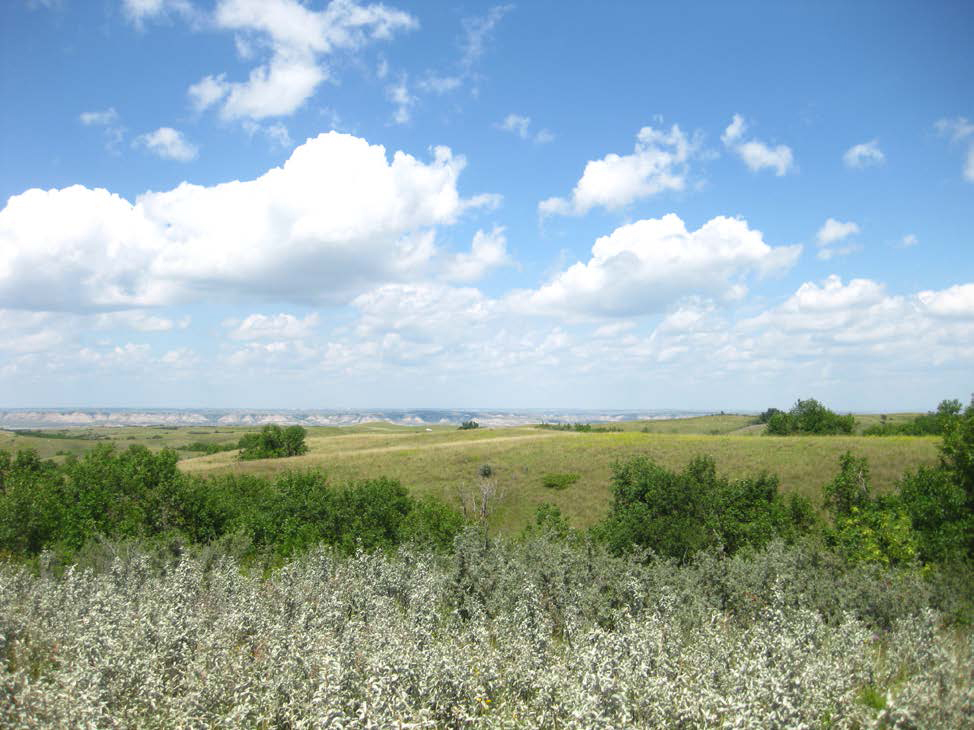
The Hawkeye Pipeline System would cross 26 miles in North Dakota. Photo from Hess Hawkeye Environmental Assessment
Plan calls for oil, gas pipelines on Missouri River at Ft. Berthold
May 20 deadline set for comments
By Talli Nauman
Native Sun News
Health & Environment Editor DICKINSON, N.D. –– People have until May 20 to comment on a proposal for construction of a private oil-and-gas pipeline system on the floor of Lake Sakakawea, the colossal Missouri River reservoir that runs through a wide swath of the Ft. Berthold Indian Reservation (FBIR). The federal Bureau of Land Management (BLM) is asking the public’s opinion about the proposed 26-mile-long Hawkeye Pipeline System, envisioned to support the oil fracking industry in the Bakken Formation. Hess North Dakota Pipelines LLC wants to build the system to connect Bakken production fields near Keene and Charlson, south of Lake Sakakawea in McKenzie County, with processing facilities near Tioga , north of the water in Williams County. Part of a global Fortune 500 Company, Hess North Dakota is a producer and midstream infrastructure provider in the Bakken. It says shipping the gas on the proposed pipeline system would alleviate pressure to flare, an activity that wastes energy, pollutes the air, and is linked to health problems. The BLM requested government-to-government consultation on the project in 2013 from 17 Northern Plains tribes, including the Mandan Hidatsa and Arikara (MHA) Nation at FBIR. Concerns expressed by tribal representatives at the consultation meetings included: pipeline safety, spill risk and response, job preference and other opportunities for tribal members, sacredness of the lake and of water, and treaty rights to protection of subsistence fishing, according to the BLM’s draft Environmental Assessment of the proposal. The BLM has to consider project impact on Indian trust resources in deciding whether to authorize the requested 50- to 100-foot-wide rights of way across U.S. Forest Service jurisdiction and U.S. Army Corp of Engineers jurisdiction necessary for the company to go forward with construction and operation of two 12-inch-diameter pipelines within a 20-foot-wide permanent easement. The North Dakota Public Service Commission also is holding hearings on the part of the proposal affecting state and private land. The new construction would follow the same route as an old pipeline under the lake, which would be repurposed to suit Hess’ needs, according to the assessment. Before BLM can grant rights of way to Hess, the company has to complete a Plan of Development, addressing Native American and other cultural resource protection. One-fourth of the reservation-land base of the MHA Nation, which represents the 14,000 members of the Three Affiliated Tribes on the FBIR, was confiscated and flooded under the giant lake when the federal government completed the Garrison Dam in 1953. “As a result of the flooding, the tribes lost approximately 95 percent of its farming land, as well as entire towns, educational and medical facilities, road systems, timber sources, plant and animal habitats, and cultural places,” the draft Environmental Assessment notes. “Although many present-day tribal members view the construction of the dam as a negative transformational event in their lives, it also is viewed as a repository of intact yet unreachable cultural sites and objects,” the assessment continues.

Map shows where Hawkeye Pipeline System crosses between McKenzie and Williams counties, in the middle of the floor of Lake Sakakawea, the reservoir created by the Garrison Dam on the Missouri River that consumed one-fourth of the Ft. Berthold Indian Reservation. Image from Hess Hawkeye Environmental Assessment
The lake contains the sacred water, as well as locations beneath the water’s surface and along its shores, that figure predominately in the local history and identity, including inundated shrines, significant reservation-era sites, locations of past healing events, familial trapping areas, and structures, according to academic research cited in the document. The company’s Plan of Development also has to address protection of water resources, health and safety, wildlife, and other issues, the BLM says. “The probability of a large spill occurring is very low, and, consequently, risk of environmental impacts is minimal,” the agency states in a risk assessment summary required for decisions about permitting. “The predicted frequency of incidents is very low,” it adds. A North Dakota Health Department incident report shows Hess Corp. experienced a pipeline leak in July, but only two barrels contaminated the soil and water at its Hawkeye Station tanks in McKenzie County. The spill spurred action to excavate and dispose of the hydrocarbon-impacted soil and to use a vacuum truck to recover effected groundwater from the excavation site. As of May 8, final disposition activities had not yet been achieved or reported to authorities. Hess received clemency from the state earlier this year when the North Dakota Industrial Commission granted the company’s request for forgiveness of fines amounting to $12,500 daily for failing to meet gas-flaring reduction limits, according to The Associated Press. Written comments on the proposal can be mailed to: BLM North Dakota Field Office, Attention Lowell Hassler, Project Manager, Hawkeye Pipeline Project, 99 23rd Avenue West, Suite A, Dickinson, ND 58601. Comments can be submitted electronically to lhassler@blm.gov (Contact Talli Nauman at talli.nauman@gmail.com) Copyright permission Native Sun News
Join the Conversation
